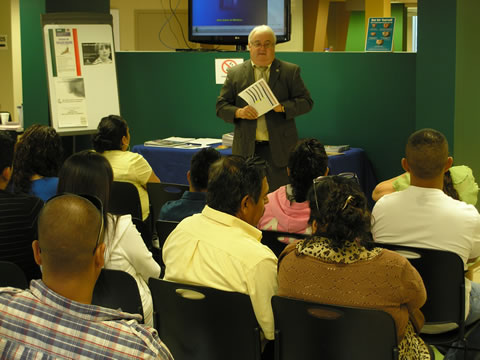
Children's healthy development depends on safe and positive experiences when they are very young.
If you work or go to school, you want to know that your child is in good hands while you are away. You may choose in-home care, where the caregiver comes to your home. Or your child might go to the caregiver's home. Finally, there are child care centers. You need to choose the one that works for your family.
It is important to get to know your child's caregivers. They will be a big part of your child's life. The caregiver's training should involve
- Knowledge of how young children learn and grow
- Positive, consistent discipline
- Knowledge of the signs that a child is sick
- Cleanliness and safety practices to help keep kids from getting sick or hurt
- Basic first aid
Child Care Safety Checklist for Parents and Child Care Providers
CRIBS: Make sure cribs meet current national safety standards and are in good condition. Look for a certification safety seal. Older cribs may not meet current standards. Crib slats should be no more than 2 3/8" apart, and mattresses should fit snugly.
This can prevent strangulation and suffocation associated with older cribs and mattresses that are too small.
SOFT BEDDING: Be sure that no pillows, soft bedding, or comforters are used when you put babies to sleep. Babies should be put to sleep on their backs in a crib with a firm, flat mattress.
This can help reduce Sudden Infant Death Syndrome (SIDS) and suffocation related to soft bedding.
PLAYGROUND SURFACING: Look for safe surfacing on outdoor playgrounds - at least 12 inches of wood chips, mulch, sand or pea gravel, or mats made of safety-tested rubber or rubber-like materials.
This helps protect against injuries from falls, especially head injuries.
PLAYGROUND MAINTENANCE: Check playground surfacing and equipment regularly to make sure they are maintained in good condition.
This can help prevent injuries, especially from falls.
SAFETY GATES: Be sure that safety gates are used to keep children away from potentially dangerous areas, especially stairs.
Safety gates can protect against many hazards, especially falls.
WINDOW BLIND AND CURTAIN CORDS: Be sure miniblinds and venetian blinds do not have looped cords. Check that vertical blinds, continuous looped blinds, and drapery cords have tension or tie-down devices to hold the cords tight. Check that inner cord stops have been installed. See www.windowcoverings.org for the latest blind cord safety information.
These safety devices can prevent strangulation in the loops of window blind and curtain cords.
CLOTHING DRAWSTRINGS: Be sure there are no drawstrings around the hood and neck of children's outerwear clothing. Other types of clothing fasteners, like snaps, zippers, or hook and loop fasteners (such as Velcro), should be used.
Drawstrings can catch on playground and other equipment and can strangle young children.
RECALLED PRODUCTS: Check that no recalled products are being used and that a current list of recalled children's products is readily visible.
Who can help me find a child care provider?

For information about the availability of child care, contact your local child care resource and referral (CCR&R) agency. It is a community agency that can help you choose high-quality child care that meets local regulations and standards and that best meets your needs. To learn how to locate a CCR&R agency in your area, visit the National Child Care Information and Technical Assistance Center (NCCIC), a service of the Child Care Bureau.There are various tools and checklists that can help you choose quality child care. The American Academy of Pediatrics suggests looking for the following qualities when choosing child care:
• Adult caregivers with training or experience in child development;
• A warm, nurturing, developmentally appropriate, and intellectually stimulating environment;
• Small child-staff ratios with consistent, long-term adult caregivers; and
• Good parent-staff communication.
 Print
Print Email
Email







